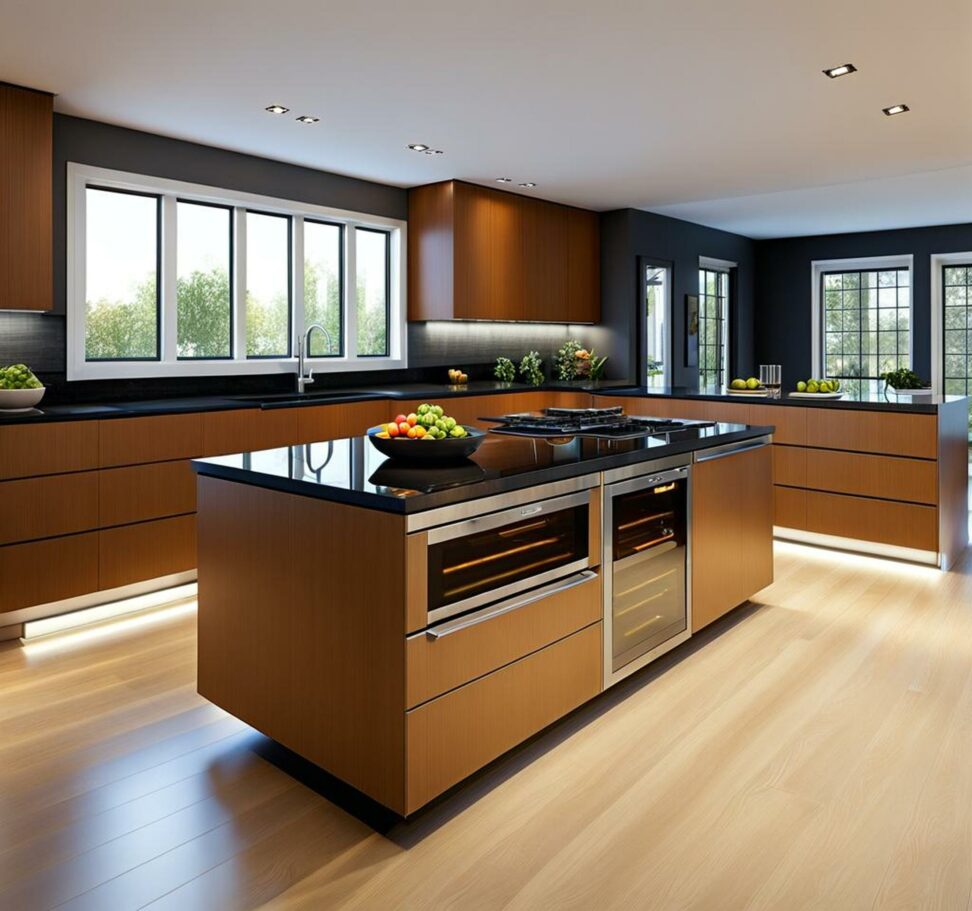Energize Bland Kitchen Islands With A Cooktop Focal Point
Kitchen islands provide extra space for food prep and storage, but their design can fall flat without the right focal point. Integrating a cooktop transforms lackluster islands into vibrant gathering places perfect for cooking together. Read on to discover how this small change catalyzes big improvements in form and function.
Countertop Space and Storage Optimisation
Islands give you valuable real estate to accomplish kitchen tasks. Adding a cooktop lets you prepare ingredients while keeping the perimeter clear for staging appetizers or arranging flowers. With a vent hood overhead, the island accommodates messy frying without splattering surrounding surfaces.

Cabinets and drawers built into its base hold essentials like spices, bakeware, and linens within arm's reach. This proximity prevents running back and forth across the room mid-recipe. It also minimizes clutter from small appliances and utensils on the countertops.
Promote Multi-Chef Collaboration
Island cooktops invite collaboration by putting the chef on display. Friends and family gather round, engaging in conversation as you saute veggies or shape pasta dough. The open concept layout allows you to make eye contact, fostering connection through cooking.
With ample elbow room, multiple people can get hands-on. Let the kids sprinkle chocolate chips while you fold batter for bonding over baking cookies. Coordinate timings and hand off tasks, working cooperatively to assemble a feast.
Kitchen Triangle Workflow Efficiency
Strategically placing the island creates an efficient kitchen triangle connecting the cooktop, sink, and refrigerator. This clear path of movement between zones streamlines cooking workflows. As you brown meat on the cooktop, the sink stays within reach for filling pasta pots or rinsing produce. Frequent trips to the fridge for ingredients don't interrupt the cooking process.
Upgrading from a disjointed work pattern to continuous loops amplifies your productivity. With tools, spices, pans and utensils at your fingertips, you'll cook with the confidence and speed of a restaurant chef.
Mix Materials and Finishes for Striking Contrast
The island cooktop pops when its materials complement the overall kitchen scheme. For contemporary spaces, combine stainless steel with the sleek appearance of quartz or granite. In farmhouse kitchens, soapstone and butcher block exude rustic warmth.
Tile, metal and stone backsplashes dress up the utilitarian vent hood with personalized flair. Their colors and textures establishing the island as a one-of-a-kind centerpiece. Accentuate features through strategic lighting, allowing pendants to spotlight handcrafted details.
Carefully Assess Safety Requirements
Island cooktops must balance stylish design with diligent fire prevention. Install ventilation hoods sized appropriately for gas or electric ranges. For gas, opt for sealed burners and electronic ignitions rather than open flames. Place knob controls facing away from nearby seating.
Leave a minimum of 42 inches of clearance behind and on one side of the cooktop to safely navigate during use. On the opposite side, allow for ample leg room between the counter edge and stools or chairs. Select durable and easy-to-clean materials like granite, marble or porcelain.
A cooktop island is a must have in your kitchen. Gain counter real estate for meal prep while promoting collaboration through displayed cooking. Strategic layouts connect tasks efficiently. Mix materials and lighting to create eye-catching style. And careful consideration for safety keeps the design inviting, not hazardous. By following these best practices, that once bland island transforms into a social hotspot perfect for coming together.